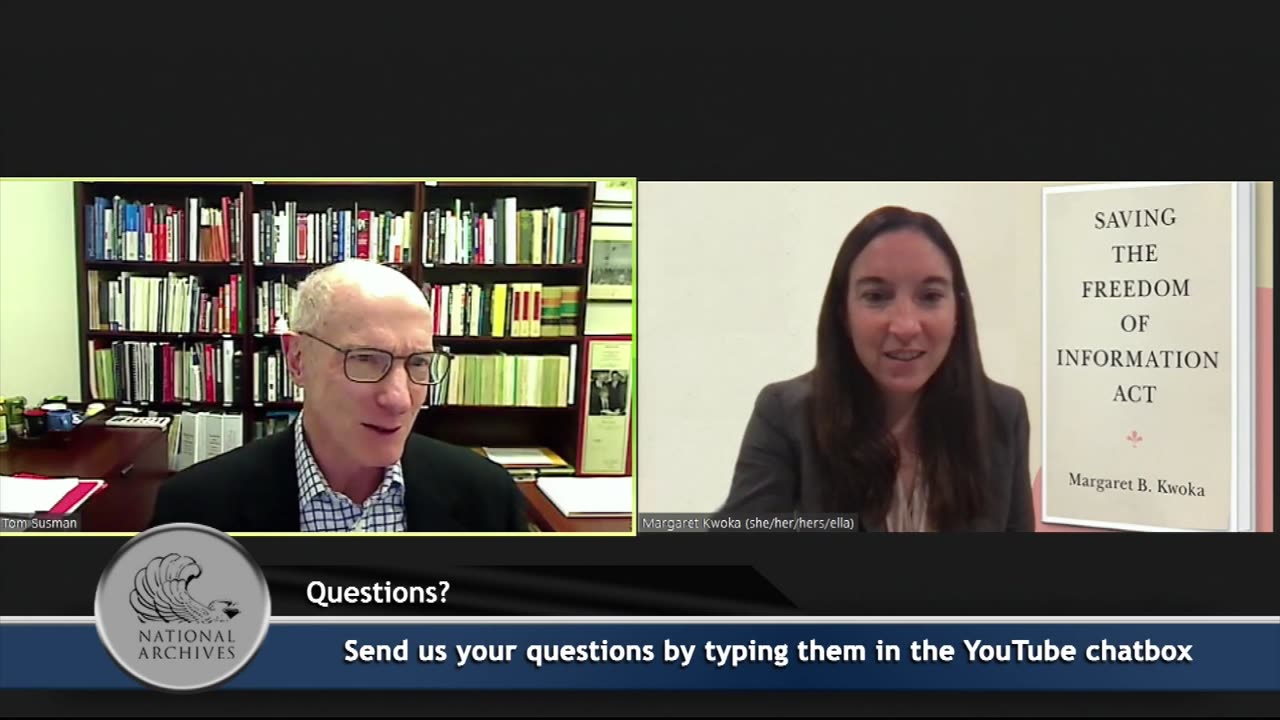Premium Only Content

Saving the Freedom of Information Act
Enacted in 1966, and taking effect on July 5, 1967, the Freedom of Information Act ( FOIA) provides that any person has a right, enforceable in court, to obtain access to federal agency records, and establishes a statutory right of public access to Executive Branch information in the federal government. Professor Margaret Kwoka posits that FOIA was designed to promote oversight of governmental activities, under the notion that most users would be journalists. Today, however, FOIA is largely used for purposes other than fostering democratic accountability, and most requesters are either individuals seeking their own files, businesses using FOIA as part of commercial enterprises, or others with idiosyncratic purposes like political opposition research. In this sweeping, empirical study, Kwoka documents how agencies have responded to the large volume of non-oversight requesters by creating new processes, systems, and specialists, which in turn has had a deleterious impact on journalists and the media. To address this problem, Kwoka proposes a series of structural solutions aimed at shrinking FOIA to re-center its oversight purposes.
The views and opinions expressed in this program do not necessarily state or reflect those of the National Archives and Records Administration.
Fair Use Disclaimer:
All content that uses public funds by any US government agency, state, or local government is available for worldwide use and reuse under the terms of the Creative Commons CC0 1.0 Universal license. Included within these resources may be copyrighted material(s), the use of which has not always been specifically authorized by the copyright owner. Any copyrighted content used is for educational, research, reporting, commentary, entertainment, informational, and criticism purposes.
In our efforts to provide the Rumble community with quality content that is “fair use,” this content is covered under Section 107 of the Copyright Act ( https://www.copyright.gov/fair-use/ ).
If you wish to use this copyrighted material for purposes that go beyond “fair use,” you must obtain permission from the copyright owner.
If you believe that any copyrighted materials appear in this content and you disagree with our assessment that it constitutes “fair use,” please get in touch with us.
-
 27:28
27:28
Glenn Greenwald
14 hours agoGlenn Reacts to Trump's Gaza Take Over: System Update Special
186K427 -
 2:13:49
2:13:49
Melonie Mac
10 hours agoGo Boom Live Ep 36!
100K9 -
 1:02:11
1:02:11
Sarah Westall
10 hours agoFreezing USAID & its Operations in Ukraine: A Massive Money Laundering Organization? w/ Sam Anthony
92.9K20 -
 2:05:35
2:05:35
Space Ice
14 hours agoSpace Ice & Redeye: Neil Breen's Pass Thru
41.3K1 -
 1:00:23
1:00:23
The StoneZONE with Roger Stone
10 hours agoRoger Stone Talks Trump’s Electric First 100 Day Agenda | The StoneZone w/ Roger Stone
45.6K9 -
 DVR
DVR
Redacted News
13 hours agoBREAKING! EPSTEIN LIST INCOMING UNDER AG PAM BONDI? DEMOCRATS FREAKING OUT, PRINCE ANDREW NERVOUS
196K307 -
 52:02
52:02
Candace Show Podcast
16 hours agoBecoming Brigitte: An Inaccessible Past | Ep 2
181K271 -
 2:07:26
2:07:26
2 MIKES LIVE
14 hours ago2 MIKES LIVE #176 News Breakdown Wednesday!
34.7K2 -
 1:39:11
1:39:11
I_Came_With_Fire_Podcast
15 hours agoGAZA TAKEOVER | USAID EXPLAINED | TARIFF TAKEDOWN
52.5K10 -
 37:14
37:14
The Based Mother
15 hours ago $1.68 earnedFULL OF IT! Crooked politicians say they care about children. Their actions tell a different story.
31.7K5